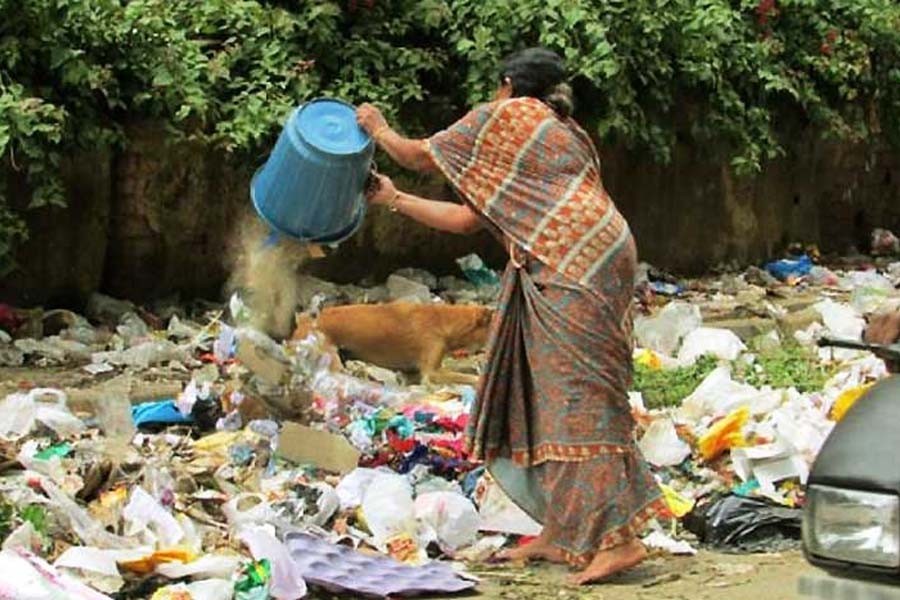Similar to jaywalking, the people of Bangladesh are compulsively habituated to littering. Even the poverty-stricken, unruly countries' public places are relatively free of filth compared to the big cities of Bangladesh. Dhaka has all the features to become the most infamous place in the country when it comes to littering. This is a glaring truth. With the fast expansion of Dhaka and increase in the migration of people of mixed backgrounds to the capital, littering spreads unabatedly. Unlike the river and air pollution, the atmospheric decline caused by littering doesn't pose any great threat to the capital's residents. But roads, public places etc strewn with litters and throwaways create ugly scenes.
It hurts the sensibilities of the urbane city dwellers. Moreover, apart from making people depressed, Dhaka's untidiness prompts an omnipresent gloom to hang above the city. People on frequent visits to the other South Asian cities find Dhaka's general people to be inured to the pervasive dirtiness. Due to the litters spread in every segment of the urban life, one cannot tell the city's sterling areasfrom the parts carefully avoided by the people with taste. In the developed countries, before entering a theatre, a cinema, or shopping malls etc, the habit of pressing cigarette butts on the floor under shoes was a common view. Those were the days when smoking in public was not prohibited. The nasty habit has long gone in the West. But cigarette butts littered all over public hospital premises is a normal spectacle in Bangladesh.
Dhaka's nature lovers still try to grow exuberant plants and flowers inthe manicured parks ofneighbourhood. But beside this pleasantatmosphere exuding health and a feel-good mood, the traditionally dingy parts of the city remain filled with all possible kinds of trash. Some of them are thrown from homes, some from roadside restaurants, into makeshift waste dumps. But the two city corporations' litter binsor dumpsters lie within their reach. The vital point here is people cannot be made to throw garbage into the designated venues. All this contributes to the making of ugly heaps of garbage --- at times emitting revolting stench.
To the relief of the Dhaka dwellers, the city has long been free of the rotting carcasses ofcats and street dogs beside roads. Once these dead animals left to rot for days comprised the cityscape of Dhaka in many areas. To the relief of people, this scourge has long disappeared. But the other kinds of rotten objectsare there. At times motley collection of garbage adds to the municipal wastes. A large segment of them comprises rotten vegetables, green coconut shells, empty cans, discarded baby diapers and what not. They are a normal presence inside the large bins near busy roundabouts or around sensitive points like schools in an otherwise idyllic area. At times, the fluid wastes and garbage seepage are found making the adjacent roads completely unusable. In the older Dhaka, the schoolgoing children living nearby find no way but walking over the garbage-ridden narrow alleys. Dumpsters are a common sight in areas near open-air markets of fancy products like that at Gausia in the capital.
The scenes of the city corporations' cleanliness staff sweeping the roads and footpaths right from the afternoon to late evening in attempts to make the areas concerned free of litter appear to be a mockery of the cleanliness drives. Parts of the roads appear clean for some time. But the 'litter-free' areas become filled instantly with the air-borne dust. It doesn't go away soon. Almost similar scenes are encountered below the over-bridge stairs --- strewn with human excreta. Being in a quandary, pedestrians often ask themselves how long they will have to bear with these nightmares. Similar scenes await people along the banks of the four rivers flowing by Dhaka.


